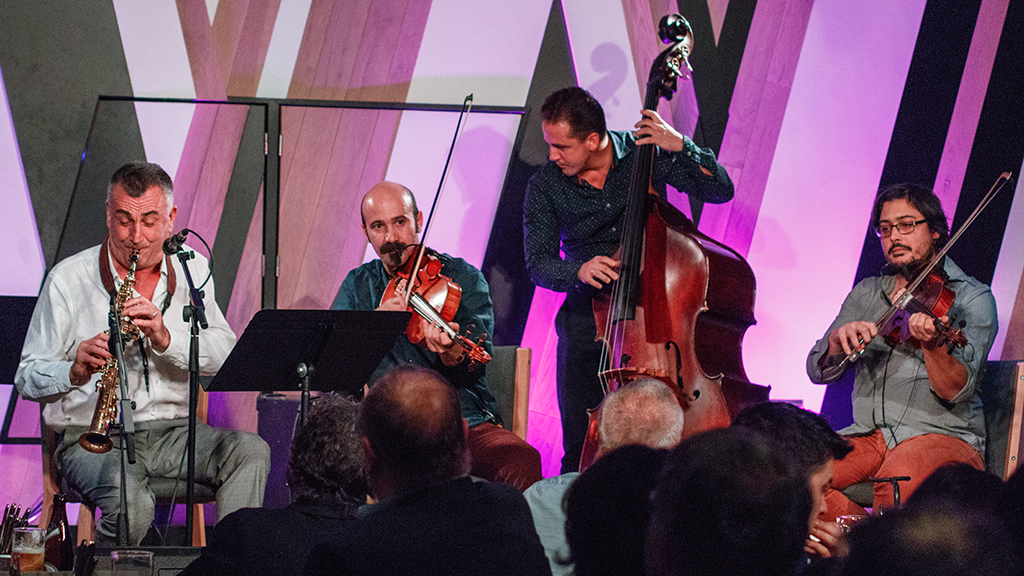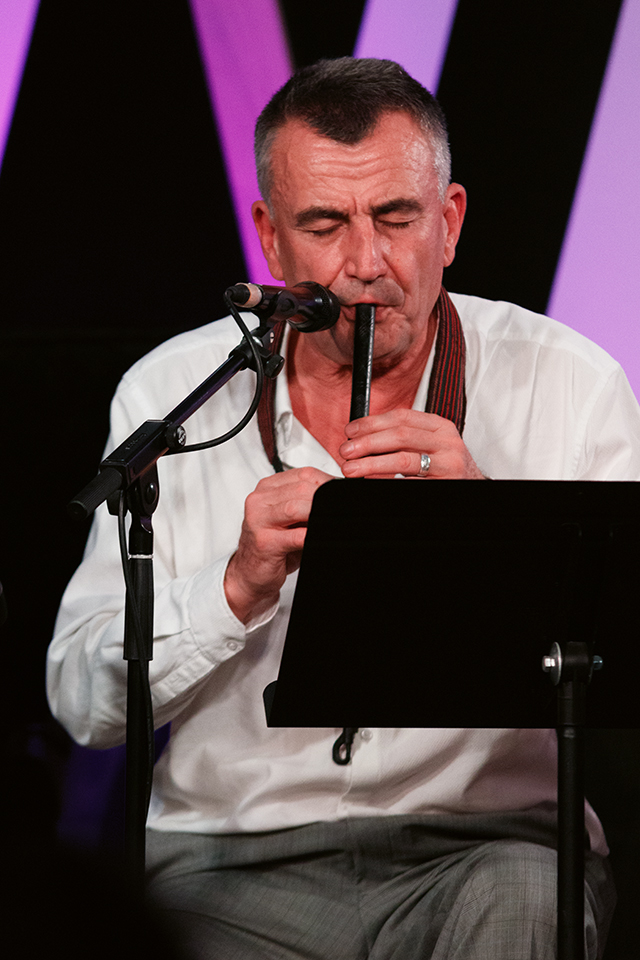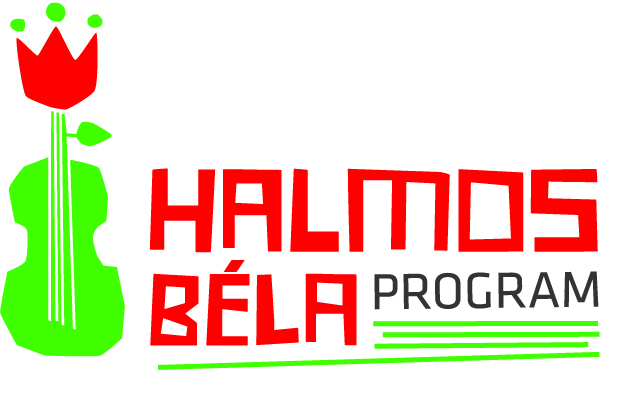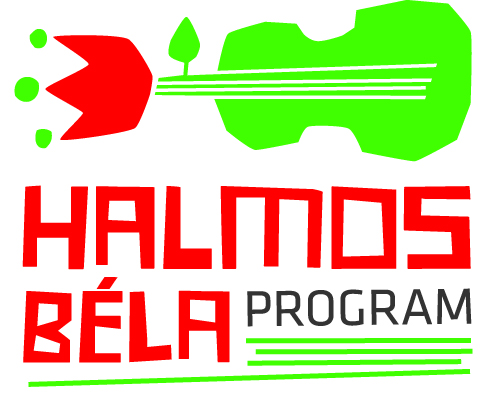
I remember a concert from the Mediawave Festival before the millennium; actually, I don’t exactly remember it, there’s just one thing that got stuck in my head about it. This one thing stuck so much it defines my attitude to music till this very day.
Mihály Dresch played the six-hole flute more emphatically than usual, maybe István Grencsó was up on the stage too, but it had surely been a special line-up, not the pure Dresch Quartet. Within the walls of the old and no-yet-renovated synagogue in Győr that came to function as a sanctuary for music, we listened to the magic that was the reincarnation of jazz into something different, and have since then I’ve been unable to shake off the effects of the superior substance that was cast on me that day. A good number of years later the “fuhun” was born (I wrote about the album HERE), which is an instrument specially designed by Dresch himself. It is capable of playing chromatic tunes and it is in part based on the six-hole flute. For a while now, the fuhun seemed to have been the main instrument and it has had a more defining role beside the tenor and the soprano saxophone. Although the focus, according to the original concept, is on the line-up: the String quartet.
Just as Félix Lajkó had done his zither-induced album, doing something different with Mihály Dresch is a grand idea, from the publisher’s perspective. Of course, it is hard to define by Dresch’s standards what “something different” really is, as he has taken part in a plethora of productions, despite his musical personality is best vested in leading roles. In fact, he is the String Quartet’s frontman, where he takes the lead with the wind instruments.

When looking at it from this direction, we can say the line-up is a peculiar one, one may be tempted to say an extended string foundation has been provided to the soaring main wind-tunes: two violas and a double bass.
All this draws inspiration from folk-roots, but parts with them in conceptualization. The album premiered at the Opus Jazz Club, and during the introduction the band’s leader pondered that their music was not actually jazz but even he had no idea what it really was. No wonder he has no idea, as Dresch’s ever top-quality music defies genres by utilizing a bit of jazz, a bit of folk, and in this line-up it even makes passes at contemporary genres. From the album they played the song “Öreges” (“Oldish”) at the concert; an old, well-known piece that had been featured on another album and at many concerts. The jazzy style allows for a constantly reinterpreted live presentation of a recorded song, as it has happened to this piece in particular, and to the “Ha felmegyek” (“When I Go Up”) and “Moldvai” (“From Moldva”) pieces too, and then there are the allusions too. For example, the roughly twenty-year old “Hungarian Bebop” I had first heard at the Közgáz Jazz Club, popped into my mind when I heard it, while it may not have been the band’s original attention to evoke this tune. This is what’s so great about Dresch’s exceptional career; everything seems to converge when you are at the peak. While the album “Forrásból” (“From the Source”) is not a typical peak-album, it’s not even an outstanding one, but this is only due to the fact that all the other albums are just as heavy.
As a middle-generation fan, I first heard Mihály Dresch’s music around ’93, in the period when he played in Félix Lajkó’s band for about a year. Maybe that wasn’t the best moment to start getting acquainted with his music, as this co-operation and joint album has been a long-defining early experience for me that surfaces whenever I hear Dresch play, or any of Lajkó’s albums. Two musical styles that had once grown apart are now beginning to edge closer to one another, as we have been able to see. This is not a problem, but it is an everlasting stigma that took on a new meaning on the string album now, since Antal Brasnyó plays the viola; and I’m tempted to say he acts as Lajkó’s contra violist, but in reality he is more like a creative second. His personality is the link that bridges the gap between the music of Dresch and Lajkó. Such music on a folk-viola (even though Brasnyó is not using a 3-string instrument) is unique to him, his figurative, yet harmonic accompaniment reveals jazzy elements, especially to urban ears, while his obvious innate talent outshines every other aspect.
 The violist’s approach is seriously defined by the heavy respect towards music and fellow musicians, his recognition of his exact place; this status demands such devotion to high standards. Sándor Sündi Csoóri as second violist is an excellent choice, his music augments the orchestration really well when he plays the tambura. I like how he sings in the Buda Folk Band and when I thought about this during the evening I realized we needed more of him and his music.
The violist’s approach is seriously defined by the heavy respect towards music and fellow musicians, his recognition of his exact place; this status demands such devotion to high standards. Sándor Sündi Csoóri as second violist is an excellent choice, his music augments the orchestration really well when he plays the tambura. I like how he sings in the Buda Folk Band and when I thought about this during the evening I realized we needed more of him and his music.
Ratio, by all means, makes or breaks orchestral music, but we are talking about a “supergroup” here, and if Brasnyó was given just as much space to move around as he had been with Lajkó, Csoóri should have been given equal rations. On the album, Dániel Szabó played the cimbalom in 3 songs, while at the concert Ferenc Zimber played the instrument with sweeping energies and András Bognár’s double bass neatly fit into the string concept; all in all, we have a quintet. Hortenzia Lőrincz sings in two songs on the album and she also joined the fray at the concert. There are a few better singers than her, though, and Dresch should completely abandon his vocal aspirations… if we look at it solely on technical terms.
On the other hand, their honest vocals gave away how deeply connected they feel to the music of the night, and to music in general, to Hungarian culture that knows no borders, while at the same time the great amount of musical impressions elevates their production to the level of world music. World music in this context transcends the genre and takes on a kind of “Bartókian” interpretation, as a universal musical language has been successfully created with a characteristic Hungarian accent. This language has long been present in the musicians of the “Forrásból” album.
by Zoltán Végső
Dresch Vonós Quartet: Forrásból, Fonó Budai Zeneház, 2017
Translated by Kálmán Farkas
A bejegyzés trackback címe:
Kommentek:
A hozzászólások a vonatkozó jogszabályok értelmében felhasználói tartalomnak minősülnek, értük a szolgáltatás technikai üzemeltetője semmilyen felelősséget nem vállal, azokat nem ellenőrzi. Kifogás esetén forduljon a blog szerkesztőjéhez. Részletek a Felhasználási feltételekben és az adatvédelmi tájékoztatóban.




